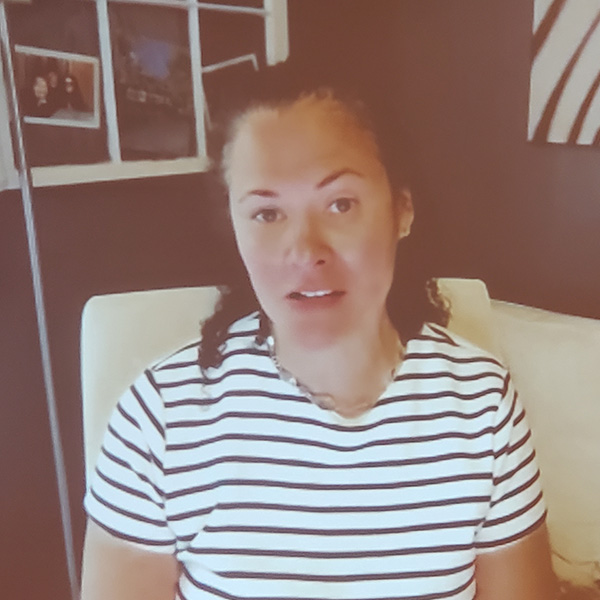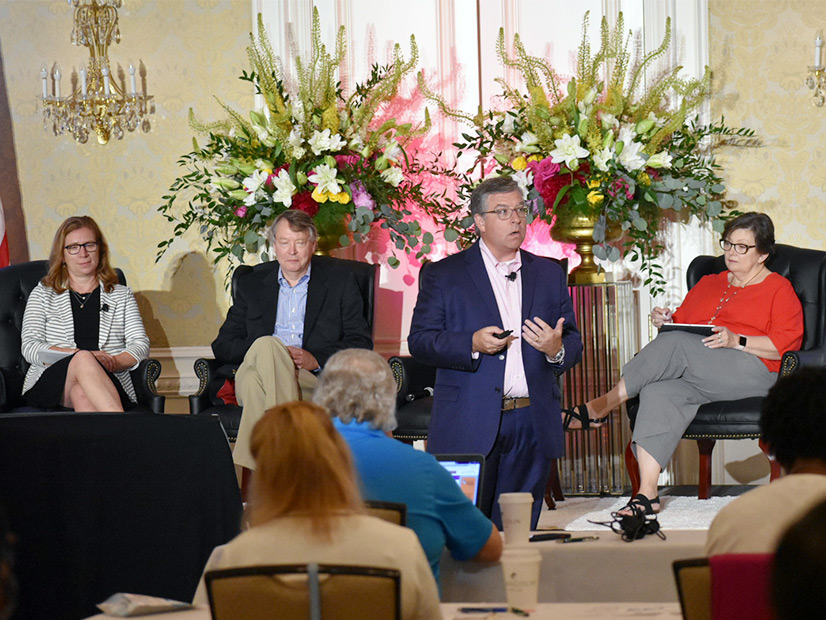Relationships between state and federal entities on large-scale infrastructure projects featured prominently at the second day of the Mid-Atlantic Conference of Regulatory Utilities Commissioners’ (MACRUC) 26th annual Education Conference at the Nemacolin Woodlands Resort in western Pennsylvania on Tuesday.
The annual conference was one of the first in the energy sector to return to in-person attendance after lockdowns and other preventative health measures stemming from the COVID-19 pandemic forced the cancellation of events around the country. (See In-person MACRUC Conference Scheduled for June.)
Attendees filled the Marquis Ballroom of the Nemacolin as others participated virtually in the hybrid event, of which this year’s theme was “policy, process and people.”

Moderators Beth Trombold, of the Public Utilities Commission of Ohio, and Talina Mathews, of the Kentucky Public Service Commission, led the first panel discussion of the morning on the impacts of the Biden administration’s new direction in energy policy on regulators and utilities. They asked panelists whether it would be more effective for the federal government or state governments working together to lead the development of infrastructure projects.
Kevin Gunn, an energy attorney with Paladin Energy Strategies and former chairman of the Missouri Public Service Commission, said a “master class in federalism” is about to play out as conflicts arise over federally funded infrastructure projects and how individual state processes handle money coming in to develop projects.
Gunn said it will probably take the intervention of the federal government to develop multistate transmission projects because of the logistics involved. Each state has its own siting processes, Gunn said, but the federal level can help streamline the process.
“For this to really work, you need transparency, communication and working together,” Gunn said. “It absolutely has to be a partnership.”

Kelly Speakes-Backman, the acting assistant secretary for the U.S. Department of Energy’s Office of Energy Efficiency and Renewable Energy (EERE), said not only will it take federal and state governments working together on infrastructure planning, it will also involve other stakeholders providing “unprecedented coordination” to make projects happen.
She said EERE has taken on state and local coordination as one of its core principles as projects are developed. The administration is also looking at what legislative or policy changes need to be made to make sure infrastructure and transmission projects happen. “We’re not looking to just put technologies out there in the field or improve transmission without first understanding what communities need and what their priorities are,” she said.
Phil Moeller, executive vice president of the Edison Electric Institute, said FERC’s recent announcement that it’s creating a task force to work with the National Association of Regulatory Utility Commissioners (NARUC) on transmission policy was a “good sign” for electric transmission projects. (See FERC Sets Federal-State Taskforce to Spur New Tx.)
Moeller also highlighted the work started a decade ago in MISO of the Multi-Value Project (MVP) portfolio as an example of how transmission can be examined today. (See MISO Stakeholders: New Blueprint Needed for Tx Planning.) He called the portfolio an “extraordinary effort” as one of the few large-scale transmission project buildouts completed in the U.S. in the last 20 years.
The projects had to be sold by investor-owned utilities and cooperatives to multiple states, Moeller said, and relationships had to be built for success. He said the model will now have to be duplicated across the country as more transmission is needed.
“We can’t kid ourselves; this is going to take a lot of work,” Moeller said. “It’s got to be done, but it’s going to take time and effort from a lot of the people in the NARUC community, federal agencies, private energy companies and co-ops to get these massive transmission projects done.”


